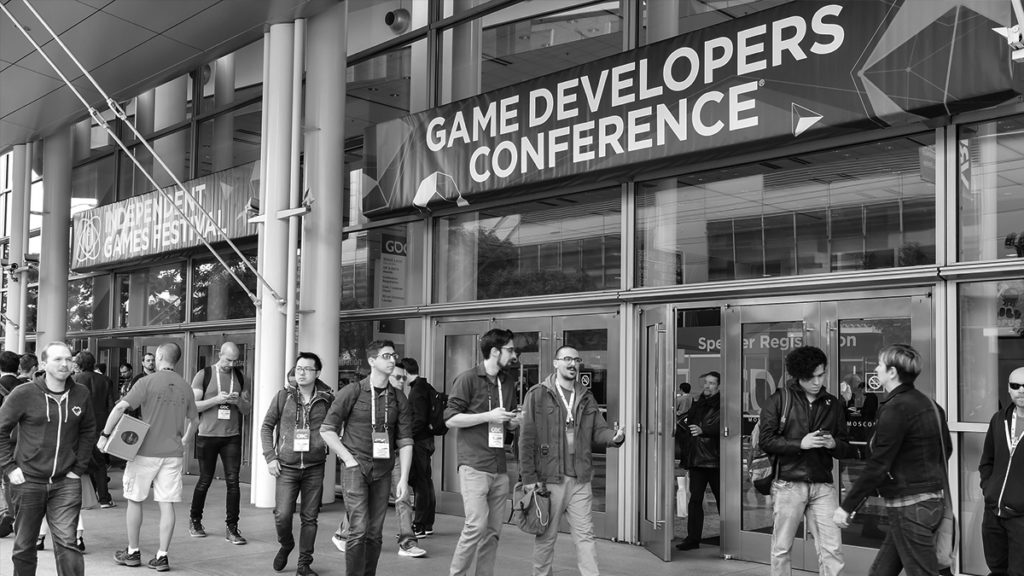Meeting in San Francisco all this week, the Game Developers Conference has been a sort of vitals-taking by the games industry as a whole, reflecting on where it has been this year, and, ideally, where it will be in the coming years. GDC 2018 brought a number of interesting announcements, trends and aspirations for developers and consumers alike.
Virtual Reality Pushes Forward
That VR featured prominently at GDC 2018 should come as a surprise to few, given its many applications in the gaming field.
A number of non-gaming properties have dipped their toes into the virtual reality waters, attempting to bridge the gap between video game worlds and reality.
Survios showcased Creed: Rise to Glory, a virtual reality boxing tie-in to 2015’s critically acclaimed Rocky film that hopes to train its players to box rather than just showcase events from the movie. On a less action-packed note, contemporary board game sensation Catan received a VR adaptation, recreating the experience of playing the game, but with strangers wearing masks.
But outside of the hardcore gaming space, VR has had little luck finding popular adoption among a more casual crowd. Facebook and Oculus are attempting to find a mainstream audience with the Oculus Go, a $200 wireless headset that needn’t be tied to a phone or PC. Disney has also invested in virtual reality, creating a tool to automatically create three-dimensional storyboards from film scripts, that, ideally, will ease the burden of turning flat text into VR imagery.
Wider use cases for VR could not come at a better time, as a January survey of game developers administered by GDC revealed that interest in making VR games is steadily waning.
“I just don’t think the install base in most cases has been quite there for them to make their investments back, unfortunately,” said Simon Carless, a GDC 2018organizer, to Mashable. “People will continue to work in VR, I just think it will potentially be more indie studios, or maybe more things funded by hardware companies who want examples of the games to showcase.”
This waning developer interest showed itself in the “Best VR Game” award GDC presented: Superhot VR took the grand prize, despite having been originally released (and considered for the same award) in 2016.
The State Of Mobile Games
Google dominated much of the conversation around augmented reality at GDC 2018, announcing that it would be releasing its Google Maps geographic data for developers using the Unity platform. Instead of painstakingly recreating environments by hand, a gargantuan task for outdoor games such as Pokemon Go or the upcoming Ghostbusters World, developers will be able to use the same satellite maps many consumers trust sight unseen.
“We help you design gameplay around real-world locations so you can choose places that are appropriate, unique, and fun to play, no matter where your players are,” said Google product manager Clementine Jacoby.
This data will make it easier for smaller developers to jump on the Pokemon Go bandwagon, offering the potential for lower-budget titles that aren’t tethered to existing properties.
On the non-AR front, Facebook Games has been facing difficulties in drawing users because of recent privacy issues on the platform at large.
“Thinking about the context of where we are and saying, ‘Look, obviously privacy is extremely important, not only to Facebook but to the developers we’re working with,’” Leo Olebe, Facebook’s global director of games partnerships, told Polygon. “It’s mostly about our mission on the games team and that’s to try and build incredible experiences for people and help developers be successful.”
Additionally, HBO revealed another promotional tie-in to Westworld Season Two at GDC 2018, though one slightly less immersive than its presence at SXSW. Described by Polygon as an “economic strategy sim,” the game lets players take control of the shadowy corporation running the theme park, letting them experience the same difficulties in managing potentially sentient robots that the show’s characters do.
Social Responsibility And Player Behavior
Game developers at GDC took special note of its effects on the world at large, especially relevant after recent comments by world leaders on the dangers of video game violence.
“As a veteran, I routinely find that people have a deep appreciation for the military, but a shallow understanding of what war is and does,” Andrew Barron, a game writer and veteran, said at a GDC 2018 talk.
Which is a problem, as, according to Barron, video games have become “society’s teachers when it comes to war.” Its greatest problems come from its erasure of the consequences for civilians in armed conflict, something Barron urged developers to change.
Inclusion likewise featured heavily, with events focused on the representation and treatment of both Muslim and Black people.
“Solely portraying us as victims justifies the wars that make us victims,” said Osama Dorias, game designer and GDC 2018 speaker. ““Muslims have a public image problem. And it’s sometimes dangerous to be Muslim. So we need help addressing the public image problem.”
Similarly, the Blacks in Gaming mixer addressed a variety of issues regarding inclusion both in game characters, game developers and game players, addressing not just the need for more representation but better tools to address toxic, racist players.
Online-only games have brought the issue of toxicity to the forefront of many discussions, with League of Legends, Fortnite and Sea of Thieves developers all discussing the importance of preventing other players from ruining the fun they spent so long trying to create.
“There’s always going to be the one percent that’s out there and disruptive,” Kimberly Voll, a senior technical designer at Riot Games, told Polygon. “Our first goal is to the player that’s being hurt by them. The problem with one disruptive player, and a severely disruptive player, is that they’re potentially affecting nine other people. It doesn’t take very long for that to explode.”

